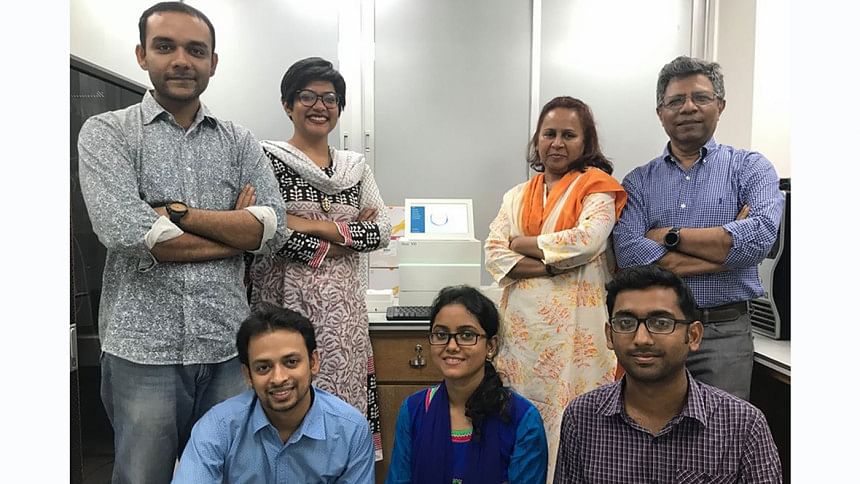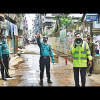Bangladeshi scientists complete genome sequencing of virus causing Covid-19

A team from Child Health Research Foundation (CHRF) has successfully completed the genome sequencing of the SARS Cov-2 virus in Bangladesh.
The announcement came late last evening in a press release provided by CHRF. SARS Cov-2 is the coronavirus that causes Covid-19.
"We completed genome sequencing of the virus a few hours ago," confirmed Dr Senjuti Saha, the scientist who led the team of three. Other members of the team are: Roly Malaker and Md Saiful Islam Shajib. Dr Senjuti's father, eminent microbiologist and executive director of the organisation Dr Samir Kumar Saha, also gave leadership to the team.
Genome sequencing is the process of identifying what nucleotides -- the basic building block of DNA and RNA -- are present in a certain cell and in what order.
"The SARS Cov-2 virus cells contains RNA. RNA is made of four bases or 'letters' -- A (adenine), U (uracil), G (guanine), and C (cytosine). The virus is made up of about 29,000 letters and we had to figure out what the sequence was," explained Dr Senjuti.
As of right now they have only finished the genome sequencing of one sample, and plan to do around 80, she added.
"We have been working on this for over a month, but the actual work of sequencing was done over 4 days," said an excited Dr Senjuti.
"In addition, the biologists working on the genome sequencing also had a full 8-hour shift, testing samples from patients. We did not want patients to suffer while we tried to do genome sequencing. So all the work was done after hours," she said, speaking to this correspondent from Cambridge in England in the early hours of today, where she has been stuck because of the closing of borders.
"To make things harder, because I had come to Cambridge in mid-March and got stuck here, the collaboration had to be remote. My team in CHRF literally had to set up a camera in the space where they were doing the sequencing, so that I could see what was happening," described Dr Senjuti.
While scientists in Bangladesh have done genome sequencing of jute and hilsa (both of which have DNA), genome sequencing of cells containing RNA is a rare feat.
"Up until now, we usually had to send our samples abroad for sequencing and analysis. But with help with the Bill and Melinda Gates Foundation, we were able to purchase a sequencer and since before the pandemic hit, we had been practising and teaching our staff to sequence influenza viruses," said Dr Senjuti.
WHAT THIS MEANS FOR THE FUTURE
Doing genome sequencing of the virus means that scientists can begin to understand which strain it is, which country it came from, and when it came to Bangladesh.
"This will help us make predictions for the future -- when will we hit the peak?" explained Dr Senjuti. There are around 16,000 genome sequencing of this virus already done worldwide, that Bangladesh can compare against, she explained.
In addition, this means that vaccines can be explored. "Vaccines are being developed in other countries, but how do we know they will work for Bangladesh unless we know what the strain of the virus we have?" she said.
"We have also uploaded the results on an open-access database and hope that vaccine-makers will be able to see it and incorporate that into their vaccines," said Dr Senjuti.
The scientist has also made the sequencing protocol public and hopes that other laboratories around the country can train themselves and start sequencing samples.
"We assume that each month two 'letters' in the RNA mutate, which means this virus is constantly mutating. Therefore sequencing too, needs to be a constant process," she said.
Besides, having a group trained in genome sequencing can prevent the next pandemic in Bangladesh.
Dr Senjuti said that this would not have been possible if Directorate General of Health Services ( DGHS) had not given them samples to test.

 For all latest news, follow The Daily Star's Google News channel.
For all latest news, follow The Daily Star's Google News channel. 








Comments